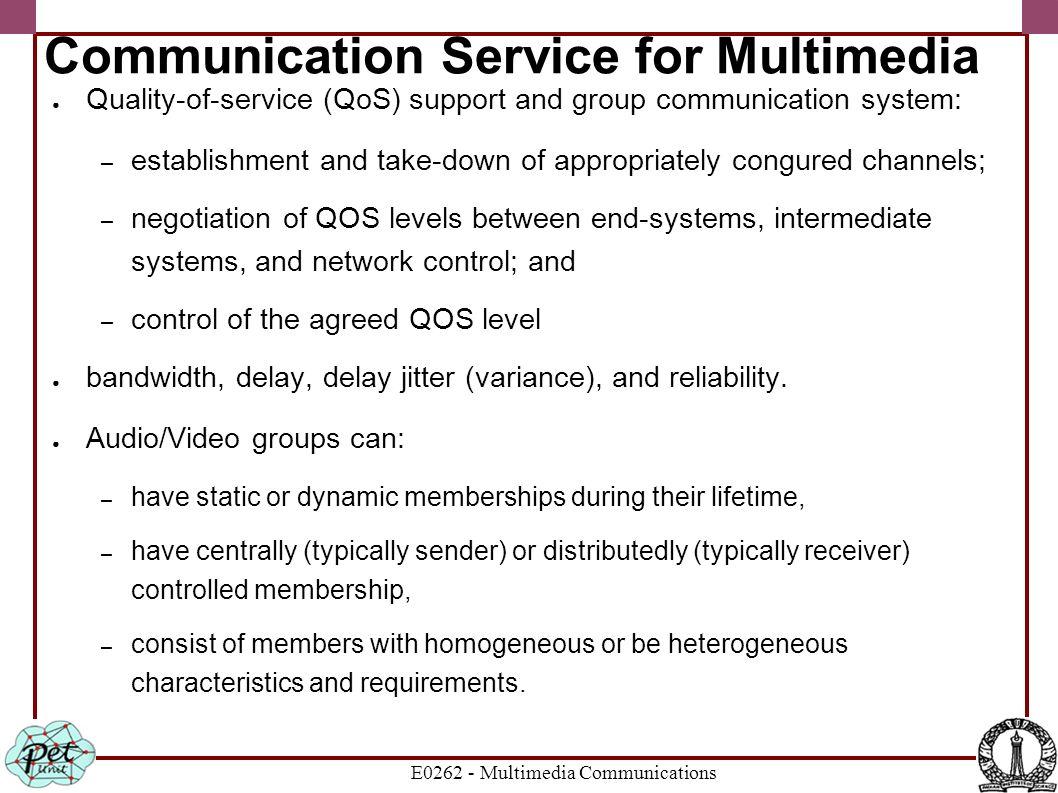Overview
Multimedia communication services integrate people's needs for existing video, audio, and data communications, and change the way people work, live, and communicate with each other. In multimedia communication services, the types and service forms of information media are diverse.
Key Features
The key features of multimedia are the diversity, interactivity and integration of information carriers. The diversity of information carriers is embodied in the process of information collection, transmission, processing and presentation, involving the interaction of multiple presentation media, transmission media, storage media or presentation media, or multiple information sources or sinks. Integration and interactivity is that the processed text, data, sound, image, graphics and other media data is an organic whole, rather than a simple accumulation of "separated" information types, regardless of the time between multiple media There are still close ties in space, a group with synchronicity and coordination. At the same time, users can fully and effectively control the entire process of information processing, and display the results comprehensively, instead of processing data, text, graphics, or sound.
Type
Information Media Type
From the perspective of the transmitted Information Media Type, different services are composed of different media Composition, a business can also be composed of multiple media such as video, image, audio, data, etc. Different media have different statistical characteristics, and the requirements for the network are also very different.
Application form
From the perspective of business application form, multimedia communication services are mainly divided into two categories, namely, distributed services and interactive services. Distributed services are services that unidirectionally transmit information flow from a given point in the network to other locations. Distributed services can be divided into distributed services that are not controlled by users and distributed services that can be controlled by users. Each type of service has Various media forms of video, image, audio, and data; interactive services are services that provide two-way information exchange between users or between users and hosts. Interactive services can be divided into conversational services, message services, and retrieval services.
(1) Distributed service
Distributed service that is not controlled by users individually In unlimited number of continuous information streams allocated by receivers, the user can receive the information stream, but cannot control the start time and the order of the information stream.
The distribution type business controlled by the user's individual participation also distributes information from a central source to a large number of users. However, the information is provided to the users as an orderly entity, and the user can control the time when the information appears and it The order. Due to the repeated transmission of information, the information entity selected by the user always starts from the beginning.

(2) Interactive business
①Conversational business
Conversational business adopts real-time end-to-end information transmission method, Provide two-way communication between user and user or user and host. User information flow can be two-way symmetrical or two-way asymmetrical.
②Message-type business
Message-type business is user-to-user communication between individual users through a storage unit, which has storage and forwarding, mailbox or message processing functions.
③Retrieving service
Retrieving service is a type of service that provides users with information stored in the information center for public use according to their needs. The user can individually retrieve the information he needs, and can control the time when the message sequence starts to be transmitted. The transmitted information includes text, data, graphics, images, sound, and so on.
Flow characteristics, timing characteristics, connection characteristics
According to the flow characteristics, timing characteristics, and connection characteristics of multimedia services, they can be divided into constant rate/variable rate, required/not Three types of end-to-end timing, connection-oriented/connectionless are required. These models provide a basic structure for the classification of multimedia communication services and the definition of service quality
Network requirements of multimedia communication services
(1) Have sufficient transmission bandwidth and take necessary compression measures for information
(2) Real-time requirements for multimedia communication
(3) Support point-to-point , Point-to-multipoint and broadcast communication
(4) Support symmetric and asymmetric connection methods
(5) The characteristics of the connection can be modified during another call
(6) One or more connections can be established and released during the call.
Multimedia communication technology specifications and standards
MPEG-1 standard
MPEG-1 specifies the full-activity video and audio of 1.5~2.0Mbit/s digital storage media The codec of the information and the representation of the data stream. The standard is mainly composed of three parts: system, video, and audio. The MPEG system coding layer illustrates the multiplexing syntax of various elementary streams (ES: ElementaryStream), such as compressed audio, video, and other auxiliary data.
MPEG-2 standard
The MPEG-2 standard is mainly divided into four parts. The first part of the system describes the MPEG-2 system coding layer, which defines the multiplexing structure of video and audio data and the method of real-time synchronization; the second part of the video, explains the encoding of video data and the encoding required to reconstruct the image Process; the third part of audio, which explains the encoding representation of audio data; the fourth part of consistency test, explains the process of detecting the characteristics of the encoded bitstream and the consistency of the test with the requirements of the above three parts.
MPEG-4 standard
The main goal of the MPEG-4 standard is to provide a new coding standard, support new methods of digital AV information communication, access and operation, and integrate various fields The resulting interactive AV terminal provides general solutions.
